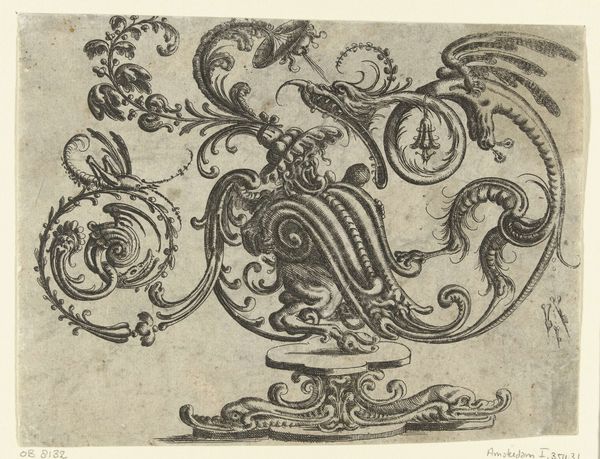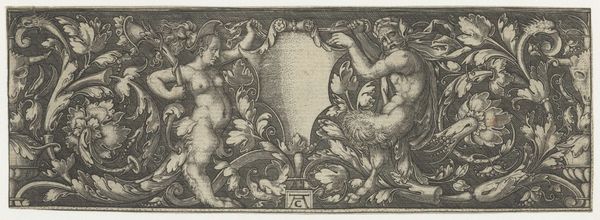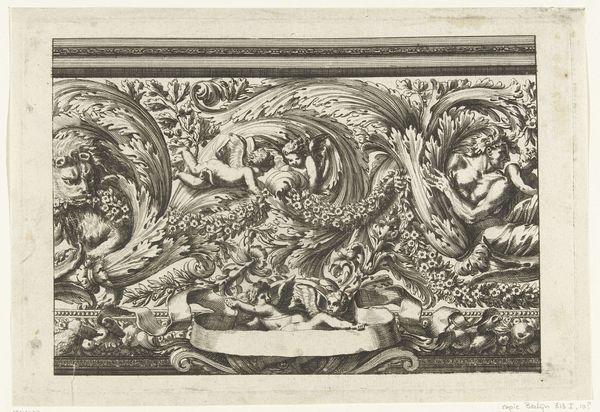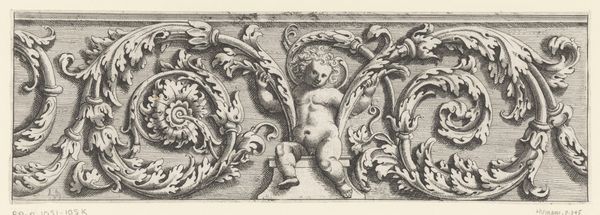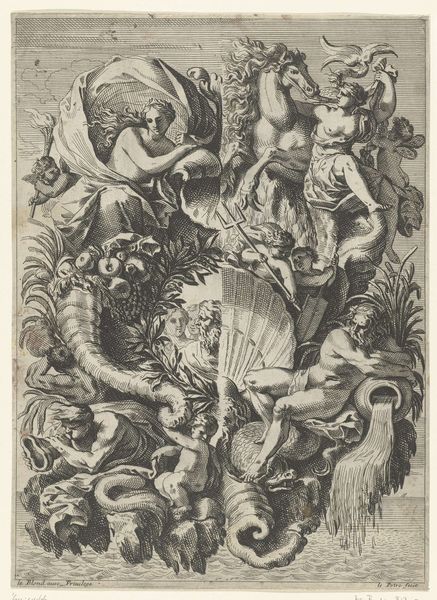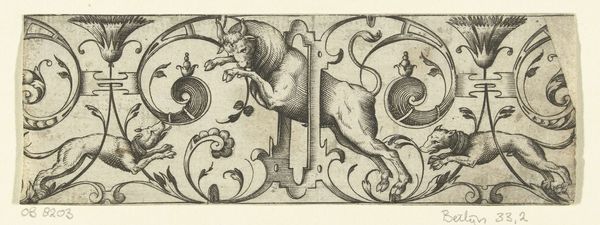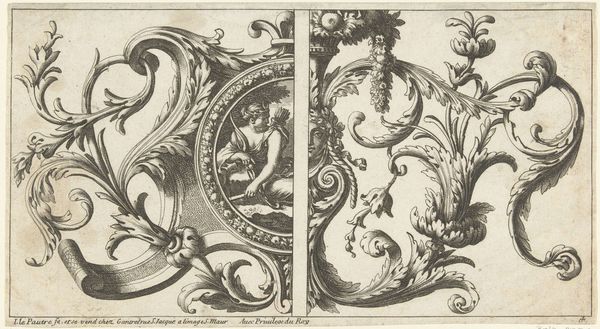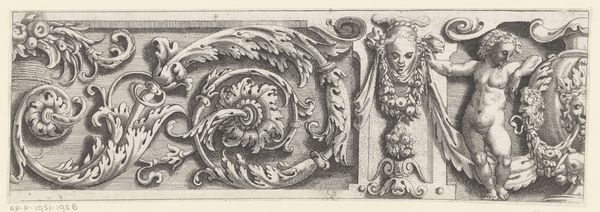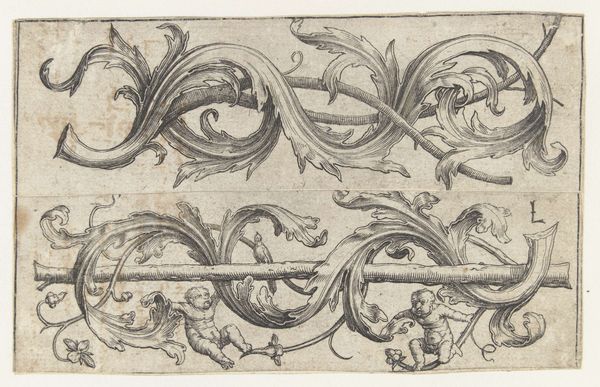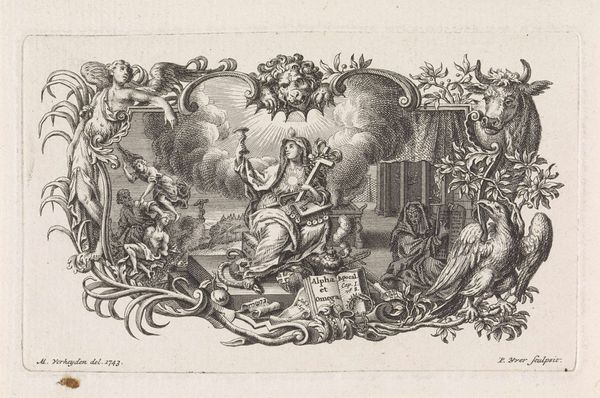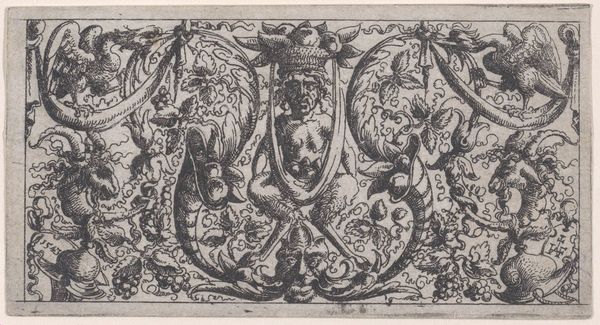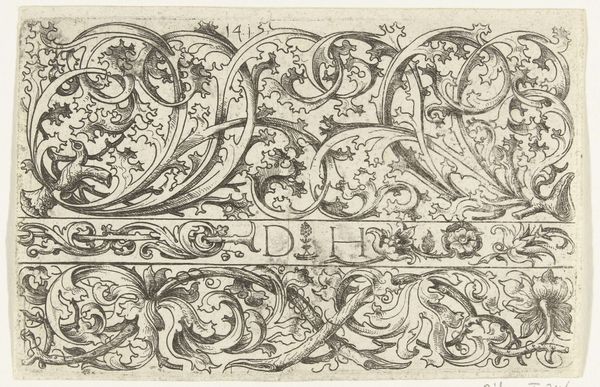
print, engraving
#
pen drawing
# print
#
figuration
#
11_renaissance
#
northern-renaissance
#
decorative-art
#
engraving
Dimensions: height 56 mm, width 113 mm
Copyright: Rijks Museum: Open Domain
Curator: This print, created by Lucas van Leyden between 1508 and 1512, is titled "Ornament met triton en sirene" which translates to "Ornament with Triton and Siren." It’s an engraving now held in the Rijksmuseum. Editor: It's densely packed, isn’t it? A swirling composition of figures and foliage all rendered in a rather precise linear style. A lot is going on in a small space. Curator: Precisely! Triton and siren motifs were common during the Renaissance. They pull from classical mythology, harking back to a perceived Golden Age and often used as symbols of transformation or dual natures – human and beast, male and female, earthly and marine. Editor: I’m struck by how these figures interact with the ornament; they seem born from it. There’s no clear distinction between the biological forms and the abstract foliage, which blends in semiotic excess. Do you find that excess indicative of its cultural context? Curator: I think so. Remember, this is the Northern Renaissance, a period where artists, newly aware of classical ideals, sought to merge those rediscovered principles with their already rich artistic heritage, overflowing with symbolism. Think of how frequently artists rendered "the Fall", but often with the setting from their own culture. Leyden's engraving is filled with humanism through the eyes of northern traditions, myth swirling inside familiar forms. Editor: Yes, a tension exists between those burgeoning classical elements and what feels fundamentally medieval, almost gothic in its detail. How do the figures themselves carry those combined symbols in your reading? Curator: The Triton, male and aquatic, brandishes what looks like a broken shield, suggesting disrupted protection and dominance over the seas; the Siren, alluring but dangerous, holds a blank scroll – is it potential, or manipulation? Together they form an interesting dance, echoing mankind’s push and pull in Renaissance culture itself. The work makes a small but impactful statement about this transformative time. Editor: Well said. Viewing Leyden's engraving today is more than observing visual storytelling. It displays this fascinating blend of visual lexicons; classical and Renaissance but always distinctly and wonderfully Northern European.
Comments
No comments
Be the first to comment and join the conversation on the ultimate creative platform.
